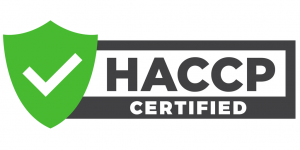
Service(s) related to this article: Global Certifications
The Safe Food for Canadians Act (SFCA) and the FDA Food Safety Modernization Act (FSMA) are prevention regulations new to the food industry. The Food Safety Modernization Act has proposed preventing contamination instead of responding to contamination and the Safe Food for Canadians Act (SFCA) is suggesting harder penalties for activities that pose food safety risk. These regulations require mandatory preventive control systems such as Hazard Analysis Critical Control Points (HACCP) for Human and Animal food throughout the food chain from primary production through to the final consumer.
HACCP is a management system in which risk-based preventive controls are conducted to avoid the contamination of biological, chemical, and physical hazards in the final food product. HACCP when applied correctly as a control process, will aid the prevention, elimination or reduction of critical levels of known and expected food contaminants.
HACCP certification is a global defining requirement for effective control of biological, chemical and physical food hazards. Compliance to HACCP, will transform brands, enable an effective entry-to-market means, and bring about new business opportunities. Inspection and validation by third-party certification bodies reaffirms an organization’s commitment to food safety. HACCP certification from dicentra Global Certifications attests that the certified facility is producing, trading, handling, exporting or importing safe food that has met the requirement for preventing food contamination instead of responding to contamination. Dicentra Global Certifications HACCP certification also demonstrates that the certified facility focuses on the hazards that affect food safety and hygiene and that your products meet these food safety regulations.
The Codex guideline identifies 12 steps in the logic sequence for application of HACCP, at dicentra there are 15 steps to obtaining HACCP Compliance.
Step 1: Assemble a HACCP team;
Step 2: Describe the Product;
Step 3: Identify intended use;
Step 4: Construct flow diagram;
Step 5: On-site confirmation of flow diagram;
Step 6: – Principle 1 – Conduct a hazard analysis;
Step 7: – Principle 2 – Determine the Critical Control Points (CCPs);
Step 8: – Principle 3 – Establish critical limit(s);
Step 9: – Principle 4 – Establish a system to monitor control of the CCP;
Step 10: – Principle 5 – Establish the corrective action to be taken when monitoring indicates that a particular CCP is not under control;
Step 11: – Principle 6 – Establish procedures for verification to confirm that the HACCP system is working effectively;
Step 12: – Principle 7 – Establish documentation concerning all procedures and records appropriate to these principles and their application;
Step 13: Get your facility audited;
Step 14: Publicize your certification;
Step 15: Annual Recertification/Surveillance audit.
HACCP is important because it controls potential chemical, biological and physical food hazards in food production. The control of major food risks assures consumers that the food they consume is safe as far as knowledge and understanding based on evidence and technology allows.
References:
dicentra is a professional consulting firm that specializes in addressing all matters related to safety, quality and compliance for all product categories in the health sciences and food industries. We evaluate, implement and provide all the necessary support for your products and operations to gain market access and build confidence in your brand. Contact dicentra at 1-866-647-3279 or visit dicentra.com to learn more about us and our services.